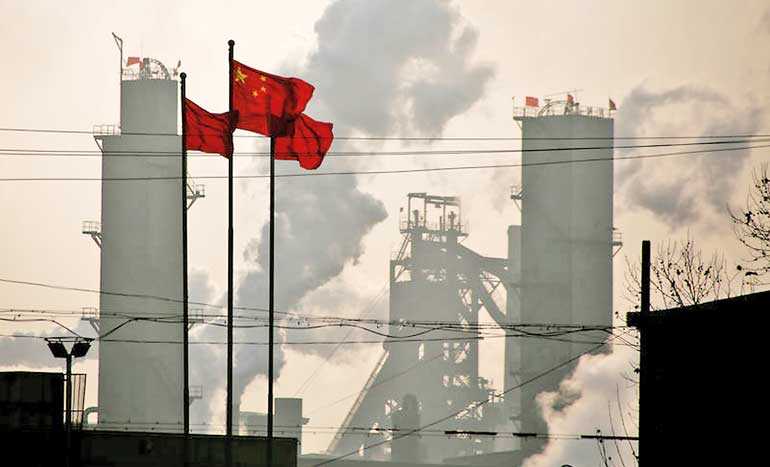Friday Dec 13, 2024
Friday Dec 13, 2024
Monday, 18 February 2019 00:00 - - {{hitsCtrl.values.hits}}

LONDON (Reuters): The world economy is caught in a “delicate equilibrium” between stabilization and a further downturn, according to Bank of England Governor Mark Carney, and that balance could look even shakier over the next few days.
Early measures of factory activity from Asia, Europe and the United States – which typically give signals of momentum in the overall economy – will be scrutinised by investors, many of whom fear that the sudden weakness of late 2018 is intensifying.
Trade tensions have weighed heavily on factories around the world, something that is likely to be high on the minds of negotiators from the United States and China when they resume their talks to avert an escalation of their tariff war.
Things looked very different a year ago. The world economy seemed to have finally kicked into a higher gear, nearly a decade after the financial crisis of 2007-08, with all regions joining in the upswing.
But a combination of U.S. President Donald Trump’s aggressive stance on trade and worries about the impact of central banks raising interest rates – the US Federal Reserve increased borrowing costs four times in 2018 - has raised fears that the world could be heading back into recession.
Carney, in a speech on 12 February, said he believed growth was likely to stabilise at its new slower pace, helped by central banks scaling back their plans for removing the massive levels of stimulus they have held in place for a decade.
“But this is a judgment, not a guarantee. The world is in a delicate equilibrium,” Carney warned.
The most recent signs from the world economy have not been promising.
US retail sales for December were far weaker than expected and Germany avoided a recession by the narrowest of margins.
Britain – weighed down by the uncertainty about Brexit as well as the global weakness – is heading for its slowest year of growth since 2009, according to the BoE, while China’s economic growth last year was the weakest in 28 years.
In the next few days, a string of surveys of manufacturing will give a fresher sense of whether the slowdown of last year is dissipating or getting worse. Purchasing manager indexes (PMIs) for the euro zone, the United States and Japan are due on 21 February and there will be other measures of factory output in the form of US durable goods data and industrial orders in Japan and Italy.
Chris Williamson, chief business economist at IHS Markit which publishes the PMIs, said that in late 2017 only one country’s factory sector – Colombia’s – was shrinking. Now 11 of the 30 countries he covers are contracting, including those in China and Germany, from where problems are rippling out into Asia and Eastern Europe respectively.
“A lot of the anecdotal evidence that we get is blaming trade wars and tariff worries, and the gloom it is casting over the prospects for the year ahead,” Williamson said. Markit’s global export index had been in decline for five months, highlighting how the slowdown was led by weaker trade, although a slight pick-up in optimism among manufacturers around the world in January offered a hint of hope.
Much of that optimism hinges on the chance of the United States and China finding a way to de-escalate their trade war.
Chinese President Xi Jinping said on Friday that talks with the United States would continue in the coming days and he hoped the two sides will be able to reach a deal.
But many investors want to see more definitive signs that the clouds hanging over the economy really are lifting.
Toby Vaughan, chief investment officer with Brown Shipley, a British private bank and wealth management firm, said his team scaled back on equity holdings in October and have not yet raised their exposure back up. “The reality is, none of those factors have really changed. There are some encouraging signs, but it’s headlines and rhetoric with regard to US-China for example,” he said. While Washington and Beijing are sounding positive about their trade stand-off, officials in Europe are worried that the Trump administration is preparing to hit European automobile exports with tariffs, citing national security grounds.
“Such a development would likely be taken negatively by markets as it would risk a direct response of tariffs from the EU and a step up in tensions,” economists at ING said in a note to clients.
“Businesses and consumers will face higher prices in such a scenario along with the likely disruption to supply chains – and all of this could see a repeat of the steep equity market falls which were seen in late 2018.”